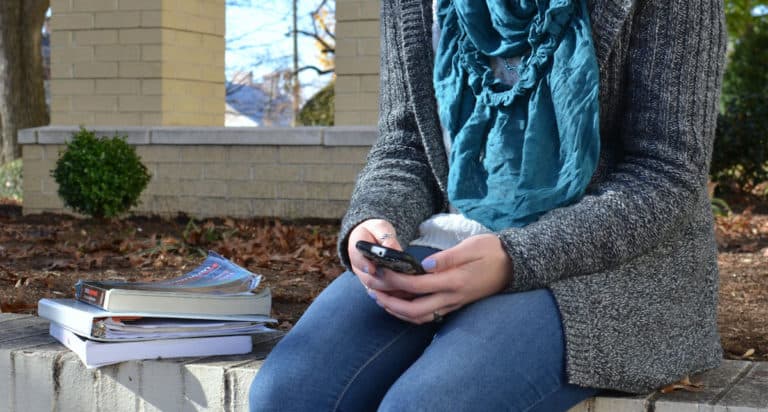This year has been a year full of craziness. Along with dealing with a global pandemic, there are also many other terrible things happening including fires and hurricanes. And many kids are going off to college this year and living in a new place with different weather from what they are used to.
This article will give you tips on how to manage and/or evacuate quickly and safely in the case of a wildfire, hurricane, earthquake, or tornado.

It’s always a good idea to be prepared and that means having an emergency supply kit or a “go bag” that is already packed.
Items to include in an emergency “go bag”
- Face masks or coverings
- Three-day supply of non-perishable food and three gallons of water per person
- A change of clothing
- Extra eyeglasses or contact lenses
- An extra set of car keys, credit cards, and cash
- First aid kit
- Prescription medications
- Flashlight
- Sanitation supplies — soap, hand sanitizer, feminine products, etc.
- Small blanket
- Copies of important documents (birth certificate, driver’s license, passport, etc.)
It is also extremely important to remain informed. Sign up for your university’s automated text alerts to stay informed in a timely manner. This is crucial if there is a natural disaster and the best way to get information quickly and stay updated. Be aware of where the emergency exits are located in any building you are in, as well as the fire extinguishers and fire alarm.
Wildfire
If there is fire near you that could potentially be coming your way, here are some steps to take to ensure your safety.
- Make sure to have at least half a tank of fuel in your vehicle at all times. If you don’t have a car make sure to find a friend who will be able to give you a ride.
- Know the community’s emergency response plan and where to go in the case of an evacuation. There will likely be shelters set up, so make sure you have directions on the quickest and safest route to get there.
- When evacuating, cover your entire body. Wear a long sleeve shirt, long pants, boots or heavy shoes, a hat, a face mask, and glasses. One hundred percent cotton is best.
- Pack up your emergency supply kit/go bag and any other valuables, such as your laptop, chargers, cell phone, extra snacks, and clothes.
- Leave when the evacuation is recommended, before it is mandatory. This will alleviate stress and potential traffic congestion.
Hurricane
Make sure you are aware of the difference between a hurricane watch and hurricane warning. A hurricane watch means hurricane conditions are possible within an area and are issued usually around 48 hours before the storm hits that area. A hurricane warning is much more serious and means that a hurricane is expected in that area.
Here are the steps to take if you are staying home during the hurricane
- Have your emergency supply kit inside your room, not in your car.
- Do laundry ahead of time, in case you lose power.
- Stay inside. Even if it looks like the storm may not be too bad, it is important to remain indoors.
- Stay away from windows. If something breaks the glass and flies through the window, you could be injured.
- Be packed in case you are told to evacuate.
Here are the steps to take if a hurricane warning is issued and you must evacuate:
- Make sure your car has a full tank of gas before the storm hits.
- Cover up windows and doors in your house/dorm before leaving.
- Unplug all appliances.
Earthquake
In the case of an earthquake, it is important to remember the following: drop, cover, hold on.
If you are indoors when the shaking starts, follow these steps: If you are near a desk or table, get underneath it and hold on to it with one hand and cover your head or neck with the other hand. Stay away from windows, hanging objects, mirrors, doorways, and large appliances. Do not try to run out a building if it is heavily shaking and avoid elevators.
If you are outdoors when the shaking starts, follow these steps: Go to a clear area if you are able to walk there safely. If you are driving, pull over to the side and stop. Avoid going near power lines, trees, and tall buildings.
If you are near the beach, take your emergency kit and head to higher ground as soon as possible, because an earthquake can cause a tsunami.
Tornado
Know the terminology: tornado watch is when weather conditions are favorable for a tornado to form. A tornado warning is when a tornado or funnel is sighted or indicated by weather radar.
In the case of a tornado, go to the lowest floor possible. Stay away from doors, windows, and outside walls. Stay in the center of the room. Avoid cafeterias, auditoriums, or spaces with a large flat roof. If you are driving, get to a shelter as soon as possible.
If you don’t have time to drive to a shelter, stop the car and get out and go lie face down on the ground and protect your head and neck. Stay away from trees and cars. Follow this same guidance if you are out walking and can’t get to a shelter.
Natural Disasters, Severe Weather and Covid-19 (CDC)
National Hurricane Center (NOAA)
How to Prepare for Emergencies (Red Cross)
You Might Also Want to Read:
10 Ways Parents Can Help College Freshmen Prepare for Dorm Emergencies









